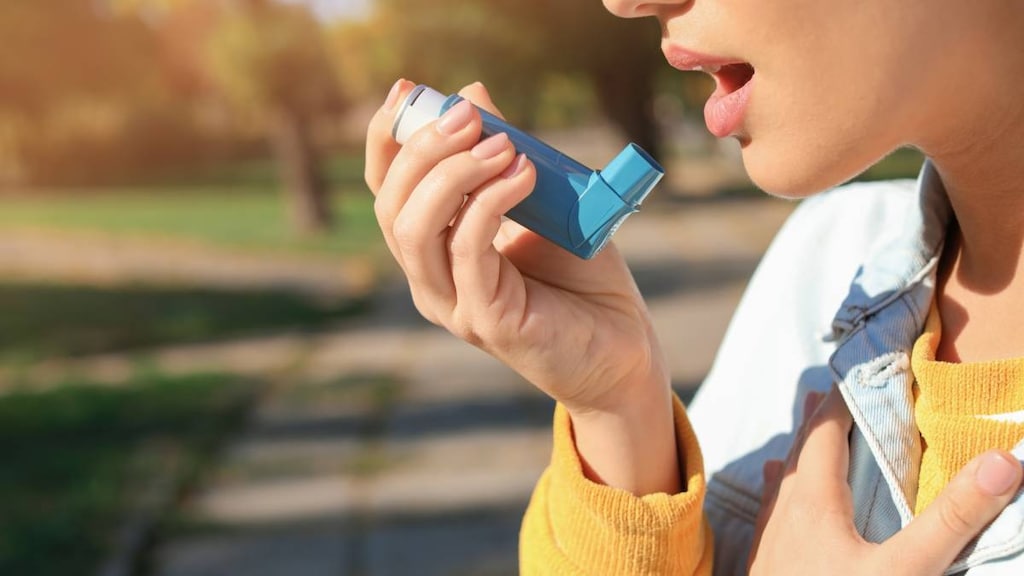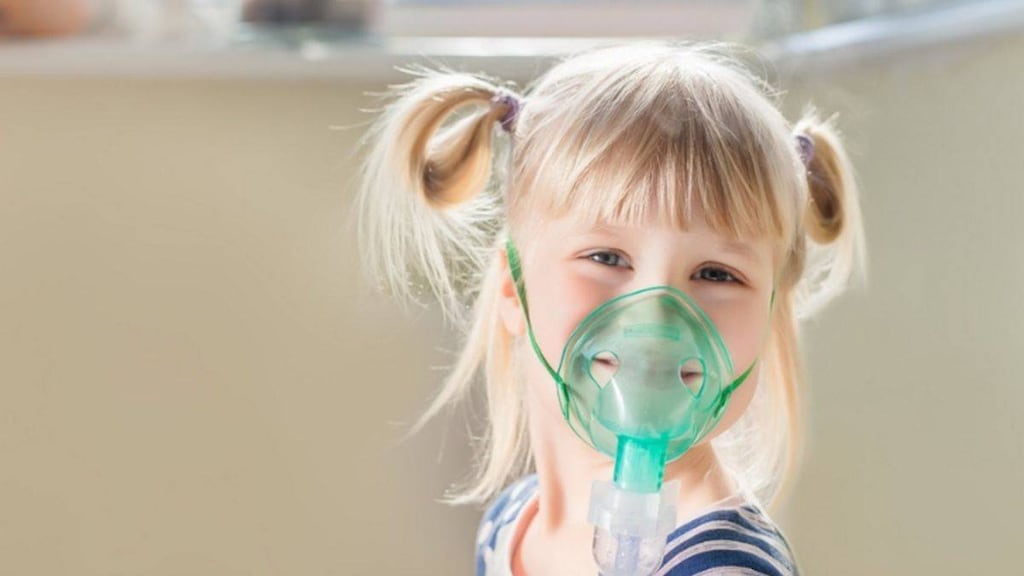Dosage Forms
Excipient information presented when available (limited, particularly for generics); consult specific product labeling.
Solution, Injection, as hydrochloride:
Isuprel: 0.2 mg/mL (1 mL, 5 mL) [contains disodium edta]
Generic: 0.2 mg/mL (1 mL, 5 mL)
Solution, Injection, as hydrochloride [preservative free]:
Generic: 0.2 mg/mL (1 mL, 5 mL)
Pharmacology
Mechanism of Action
Stimulates beta1- and beta2-receptors resulting in relaxation of bronchial, GI, and uterine smooth muscle, increased heart rate and contractility, vasodilation of peripheral vasculature
Pharmacokinetics/Pharmacodynamics
Metabolism
Via conjugation in many tissues including hepatic and pulmonary
Excretion
Urine (primarily as sulfate conjugates)
Onset of Action
IV: Immediate
Duration of Action
IV: 10-15 minutes
Half-Life Elimination
2.5-5 minutes
Use: Labeled Indications
Manufacturer’s labeled indications (see "Note"): Mild or transient episodes of heart block that do not require electric shock or pacemaker therapy; serious episodes of heart block and Adams-Stokes attacks (except when caused by ventricular tachycardia or fibrillation); cardiac arrest until electric shock or pacemaker therapy is available; bronchospasm during anesthesia; adjunct to fluid and electrolyte replacement therapy and other drugs and procedures in the treatment of hypovolemic or septic shock and low cardiac output states (eg, decompensated heart failure, cardiogenic shock)
Note: The use of isoproterenol in advanced cardiac life support (ACLS) has largely been supplanted by the use of other adrenergic agents (eg, epinephrine and dopamine). The use of isoproterenol for bronchospasm during anesthesia and cardiogenic, hypovolemic, or septic shock is no longer recommended. See Off-label Use for more appropriate, yet unlabeled, uses.
Use: Off Label
Bradycardia (significant hemodynamic compromise)yes
Based on the 2010 American Heart Association Guidelines for Cardiopulmonary Resuscitation and Emergency Cardiovascular Care, isoproterenol may be used as an alternative treatment when a symptomatic bradyarrhythmia is unresponsive to or inappropriate for treatment with atropine. May also be used as a temporizing measure while awaiting the availability of a pacemaker in treating patients with hemodynamically significant bradycardia.
Cardiogenic shockyes
The 2017 American Heart Association (AHA) scientific statement for the Contemporary Management of Cardiogenic Shock recommends isoproterenol, if needed, be considered for management of cardiogenic shock due to bradycardia AHA [van Diepen 2017].
Provocation during tilt table testing for syncopebyes
Data from a prospective randomized controlled trial in patients undergoing tilt table testing supports the use of isoproterenol for assessing patients with recurrent syncope Morillo 1995. Additional trials may be necessary to further define the role of isoproterenol in this setting.
Based on the 1996 American College of Cardiology Expert Consensus Document on Tilt Table Testing for Assessing Syncope and the 2009 European Society of Cardiology Guidelines for the diagnosis and management of syncope, incremental doses of an isoproterenol infusion may be considered for provoking vasovagal syncope during tilt table testing. Patients with ischemic heart disease, uncontrolled hypertension, left ventricular outflow tract obstruction, and significant aortic stenosis should not be administered isoproterenol.
Provocation of ventricular arrhythmias in suspected arrhythmogenic right ventricular cardiomyopathyc
Data from a study of patients who were referred for evaluation of premature ventricular contractions or suspected arrhythmogenic right ventricular cardiomyopathy (ARVC) and administered isoproterenol suggests that isoproterenol may be beneficial in the diagnosis of ARVC especially during the early stages Denis 2014. Additional data may be necessary to further define the role of isoproterenol in the diagnosis of ARVC.
Short QT-syndrome and ventricular tachycardia/ventricular fibrillation stormyes
Based on the American College of Cardiology/American Heart Association/Heart Rhythm Society (AHA/ACC/HRS) 2017 Guidelines for Management of Patients with Ventricular Arrhythmias and the Prevention of Sudden Cardiac Death, isoproterenol may be considered for patients with short QT-syndrome and VT/VF storm to help restore sinus rhythm.
Torsades de pointescyes
Data from a limited number of patients studied (case series) suggests that isoproterenol to accelerate heart rate and thereby shorten the QT interval may be beneficial for the treatment of torsade de pointes Keren 1981. Target heart rates of 100 beats per minute usually are effective at suppressing the arrhythmia Passman 2001. Additional data may be necessary to further define the role of isoproterenol for the treatment of this condition.
Based on the 2010 American Heart Association Guidelines for Cardiopulmonary Resuscitation and Emergency Cardiovascular Care and the AHA/ACC/HRS 2017 Guidelines for Management of Patients with Ventricular Arrhythmias and the Prevention of Sudden Cardiac Death, isoproterenol, as an alternative to pacing, may be considered when a polymorphic ventricular tachycardia (VT) occurs as a result of bradycardia or appears to be precipitated by rhythm pauses. In patients with polymorphic VT associated with familial long QT syndrome, avoid the use of isoproterenol.
Additional Off-Label Uses
Beta-blocker overdose; Electrical storm associated with Brugada syndrome; Temporary control of bradycardia in denervated heart transplant patients unresponsive to atropine; Ventricular arrhythmias due to AV nodal block
Contraindications
Angina, preexisting ventricular arrhythmias, tachyarrhythmias; cardiac glycoside intoxication
Dosage and Administration
Dosing: Adult
Note: Patients may exhibit dose-dependent vasodilation due to unopposed beta2-agonism elicited by isoproterenol.
Bradyarrhythmias, AV nodal block: Continuous IV infusion: Usual range: 2 to 10 mcg/minute; titrate to patient response (AHA [Neumar 2010])
Brugada syndrome with electrical storm (off-label use): IV bolus: Initial: 1 to 2 mcg, followed by a continuous infusion of 0.15 to 0.3 mcg/minute for 1 day; may repeat sequence if ventricular tachycardia/fibrillation recurs (Watanabe 2006; Zipes 2006)
Cardiogenic shock due to bradycardia (off-label use): Continuous IV infusion: 2 to 20 mcg/minute (AHA [van Diepen 2017])
Provocation during tilt table testing for syncope (off-label use): Continuous IV infusion: Initial: 1 mcg/minute; increase as necessary based on response; maximum dose: 5 mcg/minute (Benditt 1996; Brignole 2004). Note: Timing of initiation and dose adjustment during test may be institution-specific.
Provocation of ventricular arrhythmias in suspected arrhythmogenic right ventricular cardiomyopathy (off-label use): 45 mcg/minute for 3 minutes (regardless of initial heart rate) followed by evaluation for arrhythmia. Note: Perform test after withdrawing beta-blockers, calcium channel blockers, and other antiarrhythmic agents for at least 5 half-lives (Denis 2014).
Torsade de pointes (refractory) (off-label use): Continuous IV infusion: Usual range: 2 to 10 mcg/minute; titrate to patient response (AHA [Neumar 2010]; AHA/ACC/HRS [Al-Khatib 2017])
Dosing: Geriatric
Refer to adult dosing.
Dosing: Pediatric
Note: Patients may exhibit dose-dependent vasodilation due to unopposed beta2-agonism elicited by isoproterenol.
Bradycardia, severe; AV nodal block: Limited data available: Infants, Children, and Adolescents: Continuous IV infusion: 0.05 to 0.5 mcg/kg/minute; titrate to effect; doses as high as 2 mcg/kg/minute may be needed in some patients (Park 2014); usual adult range: 2 to 10 mcg/minute (AHA [Neumar 2010])
Reconstitution
IV bolus: Dilute 1 mL (0.2 mg) in 9 mL NS or D5W.
Continuous IV infusion: Dilute 1 mg (5 mL) or 2 mg (10 mL) in 250 to 500 mL NS or D5W; typical final concentration 2 mcg/mL to 16 mcg/mL; also refer to institution-specific policies and procedures.
Administration
IV: IV infusion administration requires the use of an infusion pump.
Storage
Store undiluted solution at 20°C to 25°C (68°F to 77°F). Solution should not be used if a color or precipitate is present. Exposure to air, light, or increased temperature may cause a pink to brownish pink color to develop. Stability of parenteral admixture in NS or D5W at room temperature (25°C) or at refrigeration (4°C) is 24 hours.
Drug Interactions
AtoMOXetine: May enhance the hypertensive effect of Sympathomimetics. AtoMOXetine may enhance the tachycardic effect of Sympathomimetics. Monitor therapy
Cannabinoid-Containing Products: May enhance the tachycardic effect of Sympathomimetics. Exceptions: Cannabidiol. Monitor therapy
Cocaine (Topical): May enhance the hypertensive effect of Sympathomimetics. Management: Consider alternatives to use of this combination when possible. Monitor closely for substantially increased blood pressure or heart rate and for any evidence of myocardial ischemia with concurrent use. Consider therapy modification
COMT Inhibitors: May decrease the metabolism of COMT Substrates. Monitor therapy
Doxofylline: Sympathomimetics may enhance the adverse/toxic effect of Doxofylline. Monitor therapy
Guanethidine: May enhance the arrhythmogenic effect of Sympathomimetics. Guanethidine may enhance the hypertensive effect of Sympathomimetics. Monitor therapy
Inhalational Anesthetics: May enhance the arrhythmogenic effect of Isoproterenol. Avoid combination
Linezolid: May enhance the hypertensive effect of Sympathomimetics. Management: Reduce initial doses of sympathomimetic agents, and closely monitor for enhanced pressor response, in patients receiving linezolid. Specific dose adjustment recommendations are not presently available. Consider therapy modification
Solriamfetol: Sympathomimetics may enhance the hypertensive effect of Solriamfetol. Monitor therapy
Sympathomimetics: May enhance the adverse/toxic effect of other Sympathomimetics. Monitor therapy
Tedizolid: May enhance the hypertensive effect of Sympathomimetics. Tedizolid may enhance the tachycardic effect of Sympathomimetics. Monitor therapy
Theophylline Derivatives: Isoproterenol may decrease the serum concentration of Theophylline Derivatives. Exceptions: Dyphylline. Monitor therapy
Adverse Reactions
Frequency not defined.
Cardiovascular: Adams-Stokes syndrome, angina pectoris, flushing, hypertension, hypotension, pallor, palpitations, paradoxical bradycardia (with tilt table testing), tachyarrhythmia, ventricular arrhythmia, ventricular premature contractions
Central nervous system: Dizziness, headache, nervousness, restlessness, seizure (Adams-Stokes)
Dermatologic: Diaphoresis
Endocrine & metabolic: Hypokalemia, increased serum glucose
Gastrointestinal: Nausea, vomiting
Neuromuscular & skeletal: Tremor, weakness
Ophthalmic: Blurred vision
Respiratory: Dyspnea, pulmonary edema
Warnings/Precautions
Disease-related concerns:
- Cardiovascular disease: Use with caution in patients with cardiovascular disease (eg, coronary artery disease); may increase myocardial oxygen demand resulting in ischemia.
- Diabetes: Use with caution in patients with diabetes mellitus; may transiently increase blood glucose levels.
- Distributive shock: Avoid use in patients with distributive shock; may reduce systemic vascular resistance (SVR) further resulting in hemodynamic compromise.
- Hyperthyroidism: Use with caution in patients with hyperthyroidism; may induce thyroid storm in susceptible individuals.
Special populations:
- Elderly: Use with caution in the elderly.
Dosage form specific issues:
- Sulfites: Contains sulfites; may cause allergic reaction in susceptible individuals.
Other warnings/precautions:
- Appropriate use: Use with extreme caution; not currently a treatment of choice. Excessive or prolonged use may result in decreased effectiveness.
Monitoring Parameters
ECG, heart rate, respiratory rate, arterial blood gas, arterial blood pressure, CVP; serum glucose, serum potassium, serum magnesium
Pregnancy
Pregnancy Risk Factor
C
Pregnancy Considerations
Animal reproduction studies have not been conducted by the manufacturer. Use of isoproterenol may interfere with uterine contractions at term (Mahon 1967).
Patient Education
What is this drug used for?
- It is used to treat certain types of abnormal heartbeats.
- It is used to treat heart failure (weak heart).
- It is used to treat shock.
- It may be given to you for other reasons. Talk with the doctor.
Frequently reported side effects of this drug
- Flushing
- Anxiety
- Loss of strength and energy
- Nausea
Other side effects of this drug: Talk with your doctor right away if you have any of these signs of:
- Shortness of breath
- Chest pain
- Fast heartbeat
- Abnormal heartbeat
- Severe dizziness
- Passing out
- Severe headache
- Vision changes
- Pale skin
- Blurred vision
- Sweating a lot
- Tremors
- Signs of a significant reaction like wheezing; chest tightness; fever; itching; bad cough; blue skin color; seizures; or swelling of face, lips, tongue, or throat.
Note: This is not a comprehensive list of all side effects. Talk to your doctor if you have questions.
Consumer Information Use and Disclaimer: This information should not be used to decide whether or not to take this medicine or any other medicine. Only the healthcare provider has the knowledge and training to decide which medicines are right for a specific patient. This information does not endorse any medicine as safe, effective, or approved for treating any patient or health condition. This is only a brief summary of general information about this medicine. It does NOT include all information about the possible uses, directions, warnings, precautions, interactions, adverse effects, or risks that may apply to this medicine. This information is not specific medical advice and does not replace information you receive from the healthcare provider. You must talk with the healthcare provider for complete information about the risks and benefits of using this medicine.



